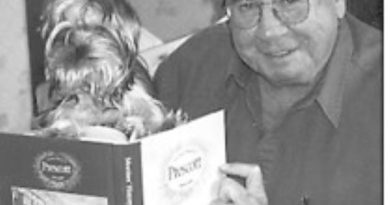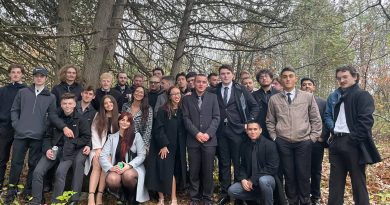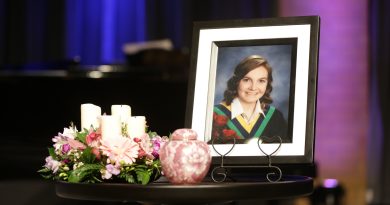Barrhaven Veteran Pays Homage to Canadian D-Day Heroes at Normandy
Ed Storey shares his experiences of wearing a vintage Canadian military uniform, reconnecting with an old friend, and his quest to France for the 80th anniversary of D-Day.
By Ed Storey
During my Air France flight to Paris, I was thinking about how I made a similar trip to Normandy 40 years ago. Back then I was a young man, the same age as those who stormed the five Norman beaches in what was the largest amphibious operation ever mounted, and I too was also in the military,
While my 36-year career as a Geomatics Technician and Terrain Analyst in the Canadian Military Engineers would eventually take me to places like The Former Yugoslavia with the UN, central Africa, Honduras with the DART, Bosnia with NATO and finally Afghanistan, those young men in June 1944 were tasked with the difficult job of conducting the opening move in the liberation of Western Europe from the clutches of Nazis.
I have been to Normandy several times. The first was in 1974 when my father, a combat Engineer who was stationed in Germany, took me on a battlefield trip to Vimy, Dieppe and Normandy; but my trip in 1984 was the first going to France as an adult. I had been collecting Canadian Army uniforms, equipment and insignia since the mid-1970s, so I had made plans to meet up with a group of British enthusiasts who collect and preserve old military vehicles and join them on their tour of Normandy. I had also decided to go dressed as a Second World War Canadian soldier and had settled on representing The Cameron Highlanders of Ottawa (M.G.) who were the Vickers machine gun and 4.2-inch mortar regiment in 3rd Canadian Infantry Division, the Juno Beach amphibious assault formation Juen 6. After more than a year of research and hunting for the correct kit, approximately the same amount of time as it took for the Allies to plan Operation Neptune, I had just managed to find everything I needed.
That 1984 trip opened my eyes to not only the interest the Europeans have in the war years but the immense gratitude they have for those who fought for their freedom. Being dressed as a wartime Canadian afforded me a lot of opportunities. I not only got the chance to mingle with wartime Veterans who had made the trip from Canada, like Cameron Highlander Veteran Oscar Couvrette from Ottawa. I was interviewed by journalist Charles Lynch, who covered World War II and was one of nine Canadian journalists who accompanied the troops to the shore at Juno Beach. I was also part of the BBC Morning Breakfast June 6 broadcast from Arromanches-les-Bains where I met Vera Lynn. A day earlier, it was at Pegasus Bridge where I met both John Howard of the 2nd Battalion the Oxford & Buckinghamshire Light Infantry (6th Airborne Division), who led the capture of that vital bridge in a daring glider-borne coup-de-main assault and Piper Bill Millin from the Commandos who had piped the way forward from Sword Beach as the Commandos fought to link up with the Airborne force.It was during this trip that I met some lifelong friends who I remained in contact with.

While the 40th Anniversary D-Day trip was exciting, the huge numbers of people who had attended the events, the tight French security measures and travelling with a vintage military vehicle group all left little opportunity for me to visit the Normandy sites I was interested in. Subsequent trips to Normandy, on my own and with my family, provided me with the opportunity to explore the region on my own terms.
With the 80th Anniversary quickly approaching, by January 2024 I had to decide whether I was going to return to Normandy. While the ensuing four decades have claimed several of my Veteran and friends contacts from 1984; a good friend of mine Richard Ingram who I had met in 1984 was now living in Paris. Having obtained the OK to travel to France from my ever understanding wife, Richard and I had decided to return to some the same locations we visited in 1984 and to book-end this trip I would recreate one of my photographs I took wearing my reconstructed Second War uniform, but this time, since I am now the same age as the Veterans were in 1984, I would dress as they did back then.
It was during the two-hour train trip from Paris to Caen that the importance of this anniversary is to the French became apparent as a steady stream of short D-Day related videos of the American beaches played on the TV screen in the coach.
There was no vintage military vehicle as our means of transport this time as I booked a rental car in Caen, and we made our way to Varaville to investigate the three memorials to the 1st Canadian Parachute Battalion. They were part of the 6th British Airborne Division and had dropped into Normandy just after midnight to capture key objectives and help seal off the eastern boundary of the invasion area from the Germans. Our progress towards Varaville was slowed due to the traffic congestion near Ranville and Pegasus Bridge and I was quickly reminded that interest in the invasion was as strong as ever.
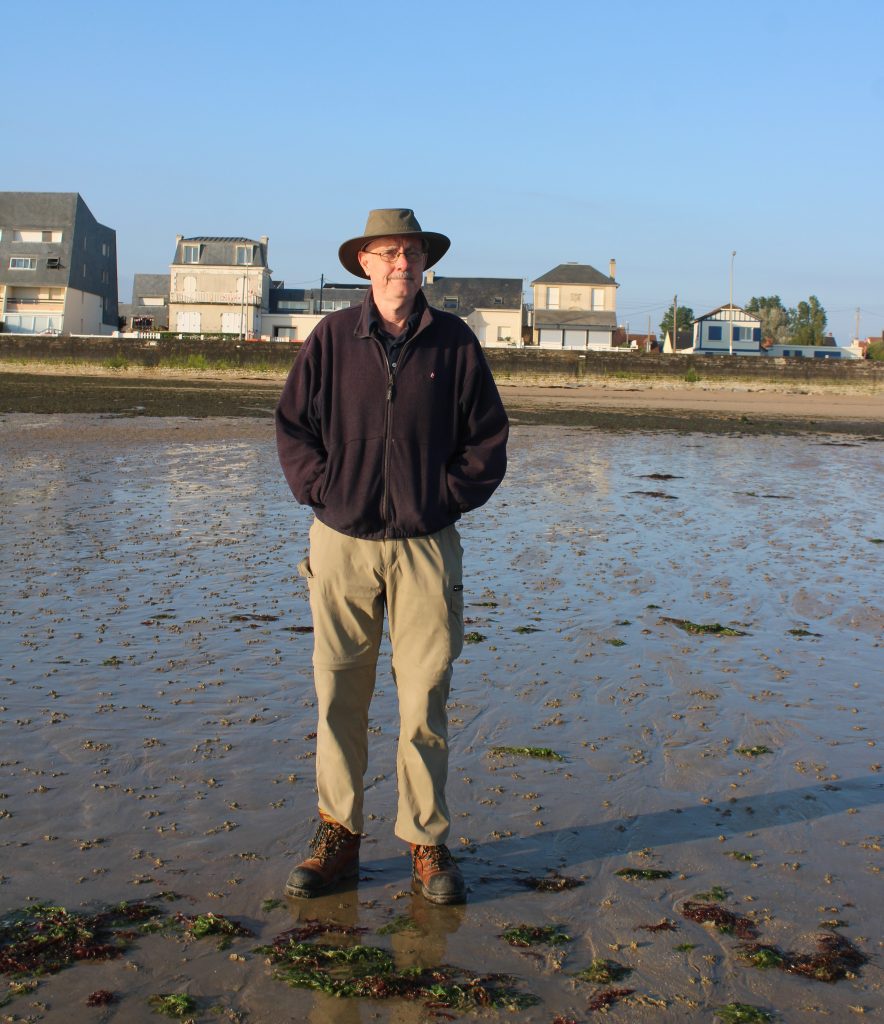
From Varaville we travelled back through the traffic congestion and headed west to Bernières-sur-Mer to check into our accommodation, which was a renovated Norman farmhouse. We were greeted by our hostess Marie-Caroline de Castelbajac, who explained to us that just after D-Day, the farm had been used by Le Régiment de la Chaudière. I had selected Bernières as our base of operations as it was central with the farmhouse being only a 15-minute walk to the beach and Canada House; or either a corresponding 30-minute walk west to the Juno Beach Centre in Courseulles-sur-Mer or Saint-Aubin-sur-Mer to the east.
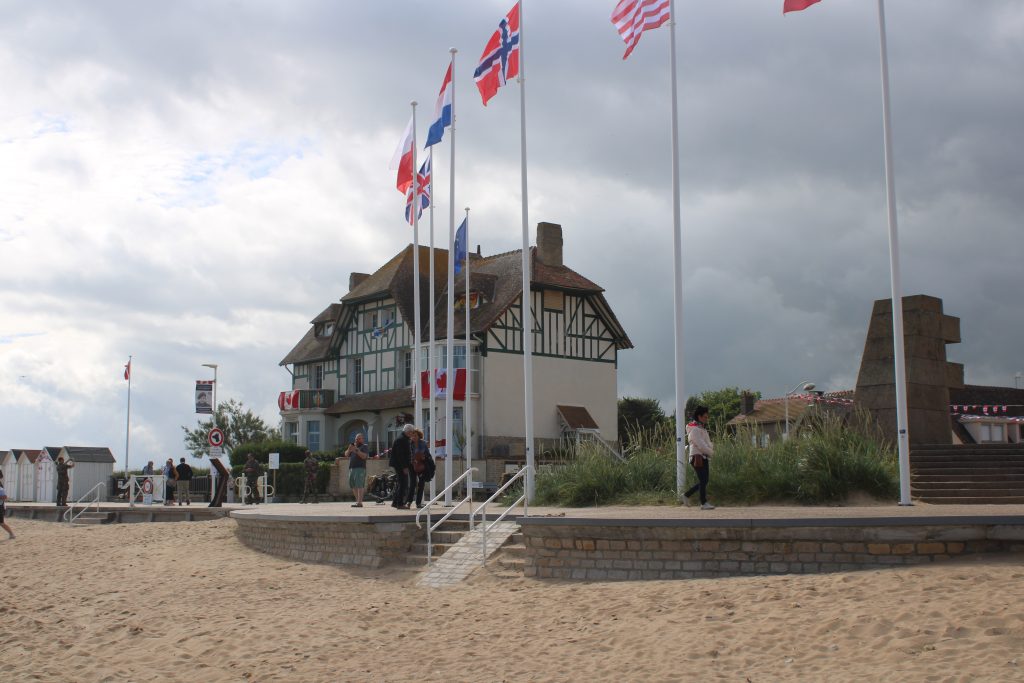
While there was a lengthy list of official functions scheduled for both the 5th and 6th of June, our plan was simple; to take a matching photograph of me at the front of Canada House as I had done 40 years ago, and to be on the beach off Saint-Aubin for 0730 on 6 June where the cinefilm of The North Shore (New Brunswick) Regiment assaulting beachhead was taken. On the 5th we managed to make our way through the throngs of people lined up to tour Canada House to take our comparison photograph and at 0730 on the 6th we were the only two people on the beach in front of Saint-Aubin. Later in the day we walked over to Courseulles where I had noticed that the wartime Veterans I had encountered in 1984 had now been replaced by my generation of Veterans who were visiting Normandy to gain an appreciation of the invasion.
The official Canadian commemoration event was held at the Juno Beach Centre. When the event finished, several hundred Canadian students departed the security perimeter with each group clambering into their respective tour bus. While watching these students, I pondered if perhaps visiting a Canadian beach in the early morning at a site made famous on film 80 years ago may have been more meaningful than spending much of the day at an officially sanctioned and scripted event.
My week in France allowed me to reconnect with an old friend and to once again pay homage to those Canadians who landed in Normandy 80 years ago.


